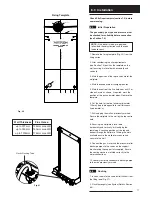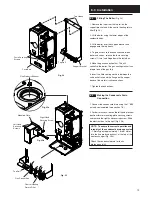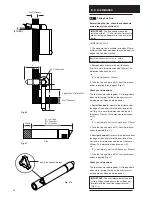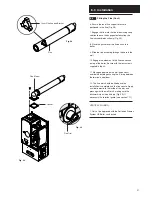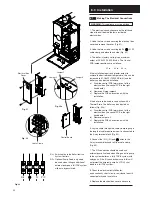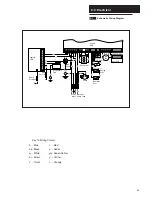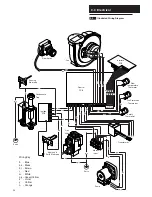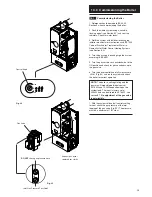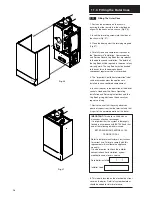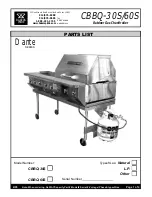
6.0 System Details
11
6.6
System Filling and Pressurising
1. A filling point connection on the central heating
return pipework must be provided to facilitate
initial filling and pressurising and also any
subsequent water loss replacement/refilling.
2. The filling method adopted must be in
accordance with all relevant water supply bye-
laws and use approved equipment.
3. Your attention is drawn to: IRN 302 and Byelaw
14.
4. The sealed primary circuits may be filled or
replenished by means of a temporary connection
between the circuit and a supply pipe, provided a
‘Listed’ double check valve or some other no less
effective backflow prevention device is
permanently connected at the inlet to the circuit
and the temporary connection is removed after
use (Fig. 9).
6.7
Expansion Vessel
1. The appliance expansion vessel is pre-charged
to 1 bar (10 lb/in
2
). Therefore, the minimum cold
fill pressure is 1 bar. The vessel is suitable for
correct operation for system capacities up to 125
litres (27.5gal). For greater system capacities an
additional expansion vessel must be fitted - refer
to BS 7074 Pt 1.
6.8
Pressure Relief Valve
(Figs. 10 & 11)
1. The pressure relief valve is set at 3 bar,
therefore all pipework, fittings, etc. should be
suitable for pressures in excess of 3 bar.
2. The pressure relief discharge pipe should be
not less than 15mm dia, run continuously
downward, and discharge outside the building,
preferably over a drain. It should be routed in
such a manner that no hazard occurs to
occupants or causes damage to wiring or
electrical components. The end of the pipe should
terminate facing down and towards the wall.
3. The discharge must not be above a window,
entrance or other public access. Consideration
must be given to the possibility that boiling
water/steam could discharge from the pipe.
Discharge Pipe
Fig. 9
Stop Valve
Double
Check
Valve
Mains
CH
Return
Temporary
Hose
Pressure Relief
Valve
Expansion Vessel
removed for clarity
Fig. 10
Fig. 11

















